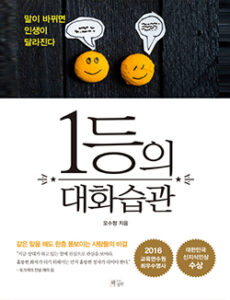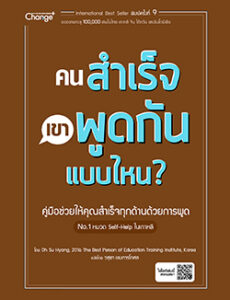2021 Participants
Jureeporn Somsart
Past Program / 2021 Program / Jureepron Somsart
■ Jureeporn Samsort asks Yang HyunKyung, editor of 〈The Secret Habits to Master Your Art of Speaking〉(Garden of Books)


Q. Jureeporn Somsart
When working on this book, we noticed that the author used numerous Korean proverbs and idioms to convey the message. So, we wonder if it is normal for self-help or psychology-related books to use a great number of Korean idioms for comparison.
A. 양현경 Yang HyunKyung
Hello. I am Yang Hyun-Kyung, an editor of Garden of Books. I am so glad to participate in the Asian Publishers Fellowship Program. I cannot meet you in person due to the situation caused by the COVID-19 though, it is an honor for me to have this chance to share my experience with you about translating and publishing.
How many proverbs or idioms are used in a book depends on the author’s writing style, I would say. Some authors tend to cite proverbs and idioms a lot, while some tend to give examples or research results. We sometimes request authors “Please keep this style of writing” while editing books. Since the book 〈The Secret Habits To Master Your Art of Speaking〉 was for reading with ease, we wanted author to write an easy-to-understand content from a Korean point of view. Therefore, this book contains a lot of idioms, proverbs, and also famous anecdotes of celebrities, familiar to Koreans.
As a matter of fact, I was worried about that point when I heard this book was being introduced abroad. I wondered how overseas readers would take that because the proverbs were familiar to Koreans but not to foreigners. However, this book was ranked in the top 3 bestsellers and maintained its position for quite a long time in Indonesia. That time I thought ‘Oh, just because the writing has a lot of Korean sentiment in it does not necessarily give overseas readers a sense of distance.’ Thinking when I read translated books from various countries like the United States, Japan, or China, and I don’t think I found them difficult simply because there were idioms used in those countries. That was because the translators made their efforts with various foot notes explaining the cultural context, I believe.
Further, as the cultural content such as dramas and movies are being actively exchanged with each other in addition to books, the cultural gap gets narrow and that makes foreign readers get closer to the idioms and provers gradually, I think.
Q. Jureeporn Somsart
Is it a tradition not to have pictures or illustrations in the self-help or serious content? Do you have any reason why? In terms of marketing, Thai readers like to read books with more pictures to relax their eyes.
A. Yang HyunKyung
For in-depth books, especially self-help or economics / management books in Korea, we do not put pictures much in them. I think every country has its own situation. For instance, in Korea, editors do not put pictures much because Korean readers tend to think that the book lacks depth and is shallow if it contains a lot of pictures. I have rarely seen economics / management books with pictures, except for stock books with a very special cartoon concept. Graphs or some diagrams can be included, but it is very rare to have illustrations included. If any, probably like one or two books out of 100.
If it comes to self-help books rather than economics/management, then it is true that it gets a little softer. Even so, it is not common to have picture in them. I went to Kyobo Bookstore, a representative bookstore in Korea, and looked up some of the most recent bestsellers. There I checked how many books have pictures. Most of the books did not have that many pictures. Even if some images were included, they were mostly used as the design element around the title. However, in recent years, not only in Korea but also in other countries, it seems that readers have a little difficulty in reading long and heavy texts as the influence of the internet or mobile devices is growing. Accordingly, in Korea there are more cases to contain elements of drawings or photographs compared to before. However, this trend is more for the field of essays, not for self-help or economics/management books yet.
Therefore, Korean editors tend to use other editing methods to enhance the readers’ understanding when the content is considered difficult. They are like, for instance, adding more subheadings, underlining or coloring key words, or using easier words or sentence structure. Having many pictures or being easy to read doesn’t necessarily matches with the marketing points especially when the content of the book is heavy. Rather, we promote the book focusing on how the book can really change the life and how useful it is.
